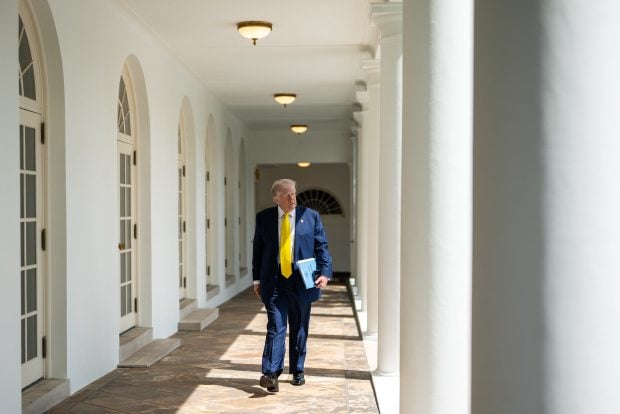
Official White House photo by Molly Riley via Flickr
US president Donald Trump has created a new employment category for federal public servants with the aim of enabling the administration to hire political appointees to key policymaking roles.
The new category, called Schedule G, will allow federal government departments and agencies to hire political, policy-orientated employees. According to the White House, the new category is required to better serve Americans’ needs by focusing on implementing the administration’s policies.
The new positions will be for non-career roles, and will complement the changes already introduced to create the Schedule Policy/Career categorisation for career civil servants, which could convert a number of existing nonpartisan roles to political appointee status, expanding the ranks of officials who are presidential appointments.
In a fact sheet, the White House said Schedule G would fill a gap in federal employee classifications by creating non-career positions – meaning post-holders will generally be expected to leave when the president who appointed them leaves office – filled by people who will be more able to faithfully implement the president’s agenda.
“President Trump believes creating non-career Schedule G positions will enhance government efficiency and accountability and improve services provided to taxpayers by increasing the horsepower for agency implementation of administration policy,” the fact sheet stated. “This will improve operations, particularly in agencies like the Department of Veterans Affairs, by streamlining appointments for key policy roles.”
However, civil service observers highlighted that the existing Schedule C provisions, which allow for entry-level political appointments into the federal government, could overlap with the Schedule G provisions – although Schedule G could allow for appointments to come in at higher grades.
Read more: ‘Not just another back office function’: US government pledges to empower federal CIOs
Move among civil service reforms
The creation of the new employment category is the latest in a number of reforms to civil service terms being implemented under president Trump.
The Schedule Policy/Career categorisation is intended to convert a number of existing nonpartisan career civil servant roles to political appointee status, expanding the ranks of officials who are presidential appointments.
The Policy/Career categorisation was introduced with the objective of helping improve civil service management as, according to the executive order, “only 41% of civil service supervisors are confident that they can remove an employee who engaged in insubordination or serious misconduct. Even fewer supervisors – 26% – are confident that they can remove an employee for poor performance”.
Therefore Schedule Policy/Career – would “restore accountability to the career civil service, beginning with positions of a confidential, policy-determining, policy-making, or policy-advocating character”.
Elsewhere in the federal government, the Office of Personnel Management has set out plans to make chief information officers in departments political appointees. The OPM said that the role of CIOs in government had changed, meaning that it was “no longer the station of impartial and apolitical technocrats” and that “the modern agency CIO role demands policy-making and policy-determinant capacities across a range of controversial political topics”.
As a result, the OPM said it is now recommending that each agency with a CIO role classified as part of the federal government’s Senior Executive Service should be reclassified. Most of these CIO posts are currently positions reserved for career officials, but the OPM is now recommending these become general positions which could be filled by any type of government appointee, and that protections against being removed from posts by political appointees, such as during a change in administration, would end.
Trump’s bid to reclassify policy-orientated roles during first term
There was a controversial precursor to Schedule Policy/Career called Schedule F.
The associated executive order signed by Trump in October 2020 sought to move federal workers in policy-orientated roles from the government’s main federal pay scale (known as the General Schedule) to ‘Schedule F’, a new category under which the usual civil service protections would not apply. This was intended to allow the president and his administration to make it easier to remove federal employees at a time when Trump was describing the permanent federal civil service as part of the “deep state”.
Trump was unable to move any workers to Schedule F before January 2021, when Biden took office and rescinded the directive.
Government Service Delivery – the new name for GovernmentDX – will bring together global digital government leaders to explore how governments can use tech-driven innovation to deliver high-quality public services. The event will be held at Walter E Washington Convention Center, Washington DC on October 29 – 30, 2025. Find out more and register your interest here